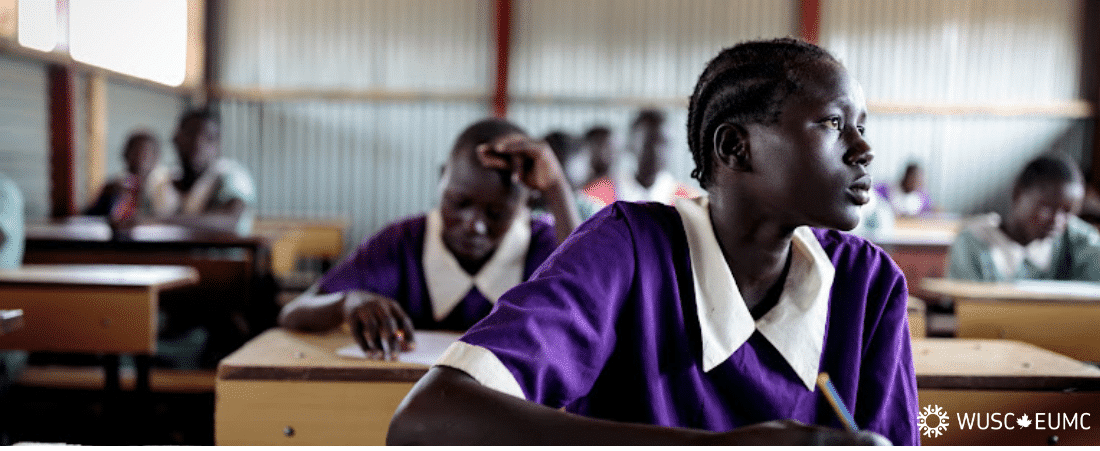
5 Takeaways from the 2021 UNHCR Education Report
In September, UNHCR published their annual Education Report. The report, titled Staying the course: challenges facing refugee education, focuses on key trends and changes in access to education for refugees. It is the most comprehensive data analysis conducted by UNHCR on refugee education, covering over 40 host countries and over half of the combined refugee population and displaced Venezuelans worldwide. Here are five important takeaways from UNHCR’s report.
1. Critical gaps exist in refugee education globally
Globally, there are 7.9 million refugee children under the age of 18 (out of 20.7 million refugees recognized by UNHCR). The report notes that refugee enrolment in schools is still lower than that of non-refugees at all levels of education. Enrolment for refugees at the primary level is at 68%, whereas it is only 34% for refugees at the secondary level. In addition, enrolment levels between host country and refugee learners still show significant disparities in access. The same applies when comparing girls’ and boys’ access to education. In many countries, enrolment rates for girls are lower than that of boys at both primary and secondary levels.
2. Support must move beyond primary education
Because of the significant decrease in enrolment rates from primary to secondary among refugees, the focus of this year’s report is on secondary education. For many refugees, secondary education is crucial for their futures and yet critically under-resourced. It should be an important time for growth and development, and an opportunity for young people to gain independence and improve their job prospects. However, the reality is that young refugees face immense pressure to drop out of school and support their families. This is why this report is putting a spotlight on refugee secondary education, highlighting the many structural barriers refugee youth face in accessing post-primary education.
3. There has been an increase in enrolment for refugees at postsecondary level
Enrolment for refugees at the postsecondary level increased to 5%. Last year, the enrollment level was at 3% and at 1% only a few years ago. UNHCR and partners implemented the 15by30 campaign, which sets an ambitious target of 15% for refugee enrolment at postsecondary level by 2030. This increase is a sign of progress during these difficult times, but there is more work to be done to achieve the target. Learn more about WUSC’s work improving postsecondary education access for refugees here.
4. The impact of COVID-19 on refugee education is profound
The COVID-19 pandemic has forced the closure of schools around the world, affecting over 1.5 billion learners. It has particularly impacted the lives of refugee students who already face challenges in accessing education. The report notes that 48% of refugee children remain out of school. Although we’ve seen improvements in enrolment rates, the pandemic threatens to undo the progress made over the past few years. Following the closure of schools and other education institutions due to COVID-19, refugee students lost an average of 142 days of school up to March 2021, according to estimates from UNHCR. Moreover, like many students around the world, refugees have also had to shift to online learning. This dramatic shift to online learning could potentially widen educational inequalities, especially in communities with limited access to digital devices and connectivity.
5. Innovative solutions are needed to close the education gap for refugees
The pandemic presents enormous challenges for people around the world, particularly refugees. In order to protect the critical gains made in refugee education, organizations like WUSC need to develop and implement new innovative solutions to support communities. Over the past year, WUSC adapted our programs and developed innovative solutions to support refugee girls and young women, facilitating access to radio-based education programs and cash transfers to support families and reducing the risks of early marriage for out-of-school girls. In addition, we used a new approach to community engagement to empower girls and young women to return to school.
WUSC works to create a better world for all young people. To learn more, start here or subscribe to get highlights straight to your inbox. Interested in volunteering internationally? View our current opportunities. Looking for a new career opportunity? Check out our current job openings. Or show your support for our cause by making a donation.
